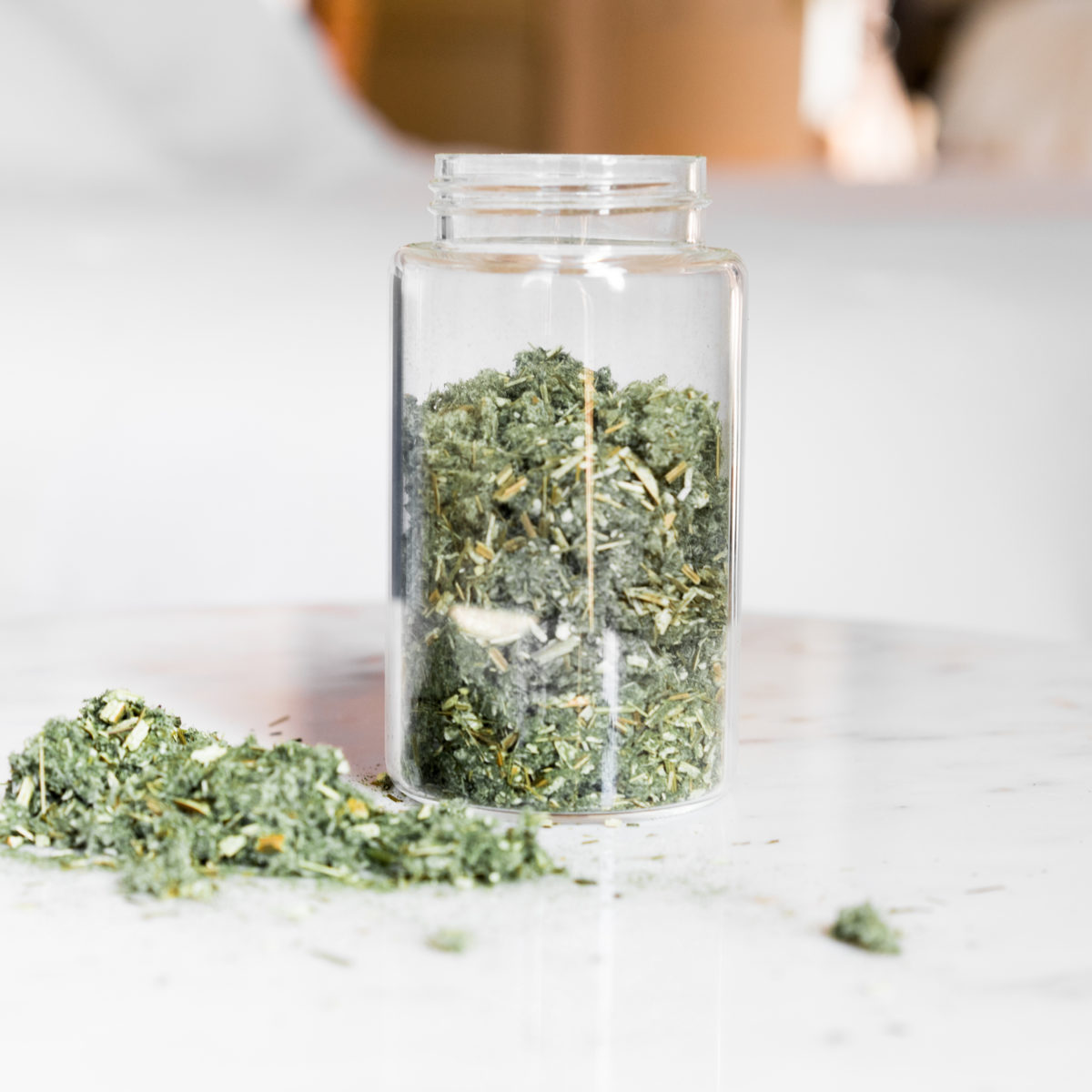
COMMON NAME (Chinese Name)
Chinese Mugwort (Ai Ye)
BOTANICAL NAME
Artemisia argyi
USES
Traditional uses of Chinese mugwort supplements include dispelling pain, alleviating irregular and painful periods, and supporting the health and comfort of menopausal and post-menopausal women. Most anecdotal reports of its effects could be related to its anti-inflammatory properties (which have been empirically verified). Oral Chinese mugwort supplements may have estrogenic properties, making them potential natural alternatives to hormone replacement therapy. These same oral supplements may also reduce diarrhea and protect against gastric mucous destruction and gastric inflammation.
Recent research shows that Chinese mugwort extract may be a promising herbal skin care therapy or product additive. It may reduce inflammation and puffiness, prevent the development of age spots and other age-related skin darkening, and its antioxidant properties may help fight the visible signs of aging. What’s more, Chinese mugwort extract may have antimicrobial properties that can help minimize the symptoms and spread of bacteria-related skin conditions, like acne. Similarly composed oral rinses may help treat canker sores.
Chinese mugwort is commonly used in a specialized kind of topical application called “moxibustion.” Moxibustion is a process of placing ground Chinese mugwort either directly on the skin, on a bed of salt or ginger, or on the end of acupuncture needles, then burning it. The therapeutic benefits of this practice are said to include relieving pain, asthma, and irregular periods, as well as prompting fetal movement to resolve breach positioning prior to labor. There is insufficient formal study of moxibustion to say whether these effects can be scientifically supported. Moreover, what research does exist suggests that this kind of application has few (if any) identifiable effects on biological systems or processes in the human body.
In Chinese medicine mugwort is categorized as an herb that regulates blood and stops bleeding. It is classified as bitter, acrid, and warm, and primarily affects the Liver, Spleen, and Kidneys meridians. When charred, the herb is used to stop bleeding.
PREPARATION & ADMINISTRATION
The leaves of the Chinese mugwort plant are most often used in medicinal applications. There is some evidence to suggest that Chinese mugwort supplements are most potent when the leaves are harvested immediately prior to when the plant’s flower buds bloom. Once harvested, these leaves are dried, then decocted for ingestion (as a tea or extract) or made into a serum for topical use. A few remedies recommend using dilute Chinese mugwort aqueous extracts in enema form if digestive distress is too severe to allow oral use.
Chinese mugwort leaves can also be dried, ground, and shaped into cone-like “moxa” which are used in topical moxibustion treatments.
PRECAUTIONS
There isn’t much information available about what side-effects different Chinese mugwort supplements may have. Due to its potential estrogenic properties, women who are pregnant or breastfeeding should not use these supplements. Additionally, moxibustion may cause burns or blisters to the skin, and there are some reports of lung and airway irritation from inhaling the smoke from burning Chinese mugwort moxas. Anyone interested in Chinese mugwort or any other herbal supplement should consult with their physician, a certified herbalist, or other qualified healthcare professional.
REFERENCES
Adams, James David, et al. “Mugwort (Artemisia Vulgaris, Artemisia Douglasiana, Artemisia Argyi) in the Treatment of Menopause, Premenstrual Syndrome, Dysmenorrhea and Attention Deficit Hyperactivity Disorder.” Chinese Medicine, vol. 03, no. 03, 2012, pp. 116–123., doi:10.4236/cm.2012.33019.
Chen, Lin-Lin, et al. “Essential Oil of Artemisia Argyi Suppresses Inflammatory Responses by Inhibiting JAK/STATs Activation.” Journal of Ethnopharmacology, vol. 204, 2017, pp. 107–117., doi:10.1016/j.jep.2017.04.017.
Ernst, E., et al. “48 Treatments Used in Complementary and Alternative Medicine.” Side Effects of Drugs Annual, vol. 35, 2014, pp. 889–898., doi:10.1016/s0378-6080(06)29048-2.
Guan, Xiao, et al. “Chemical Composition and Antimicrobial Activities of Artemisia Argyi Lévl. Et Vant Essential Oils Extracted by Simultaneous Distillation-Extraction, Subcritical Extraction and Hydrodistillation.” Molecules, vol. 24, no. 3, 2019, p. 483., doi:10.3390/molecules24030483.
Hou, Wanzhu, et al. “Crohn’s Disease.” Treating Autoimmune Disease with Chinese Medicine, 2011, pp. 123–135., doi:10.1016/b978-0-443-06974-1.00007-5.
Huang, Huey-Chun, et al. “Dual Bioactivities of Essential Oil Extracted from the Leaves of Artemisia Argyi as an Antimelanogenic versus Antioxidant Agent and Chemical Composition Analysis by GC/MS.” International Journal of Molecular Sciences, vol. 13, no. 12, 2012, pp. 14679–14697., doi:10.3390/ijms131114679.
Li, Shuang, et al. “Gastro-Protective Effect of Edible Plant Artemisia Argyi in Ethanol-Induced Rats via Normalizing Inflammatory Responses and Oxidative Stress.” Journal of Ethnopharmacology, vol. 214, 2018, pp. 207–217., doi:10.1016/j.jep.2017.12.023.
Makoroff, Kathi L., and Megan L. Mcgraw. “Skin Conditions Confused with Child Abuse.” Child Abuse and Neglect, 2011, pp. 252–259., doi:10.1016/b978-1-4160-6393-3.00030-0.
Nigam, Manisha, et al. “Bioactive Compounds and Health Benefits OfArtemisiaSpecies.” Natural Product Communications, vol. 14, no. 7, 2019, doi:10.1177/1934578×19850354.
Romm, Aviva, et al. “Pregnancy: Third Trimester.” Botanical Medicine for Women’s Health, 2010, pp. 370–397., doi:10.1016/b978-0-443-07277-2.00017-9.
Wang, Yajuan. “Micro-System Techniques.” Micro-Acupuncture in Practice, 2009, pp. 7–22., doi:10.1016/b978-044306732-7.50005-2.
Xi, Shengyan, and Yuewen Gong. “Introduction.” Essentials of Chinese Materia Medica and Medical Formulas, 2017, pp. 1–12., doi:10.1016/b978-0-12-812722-3.00048-8.
Yin, Sheng, et al. “Therapeutic Effect of Artemisia Argyi on Oral Ulcer in Rats.” Zhong Nan Da Xue Xue Bao. Yi Xue Ban = Journal of Central South University. Medical Sciences, U.S. National Library of Medicine, 28 July 2017, www.ncbi.nlm.nih.gov/pubmed/28845008.

Comments (0)